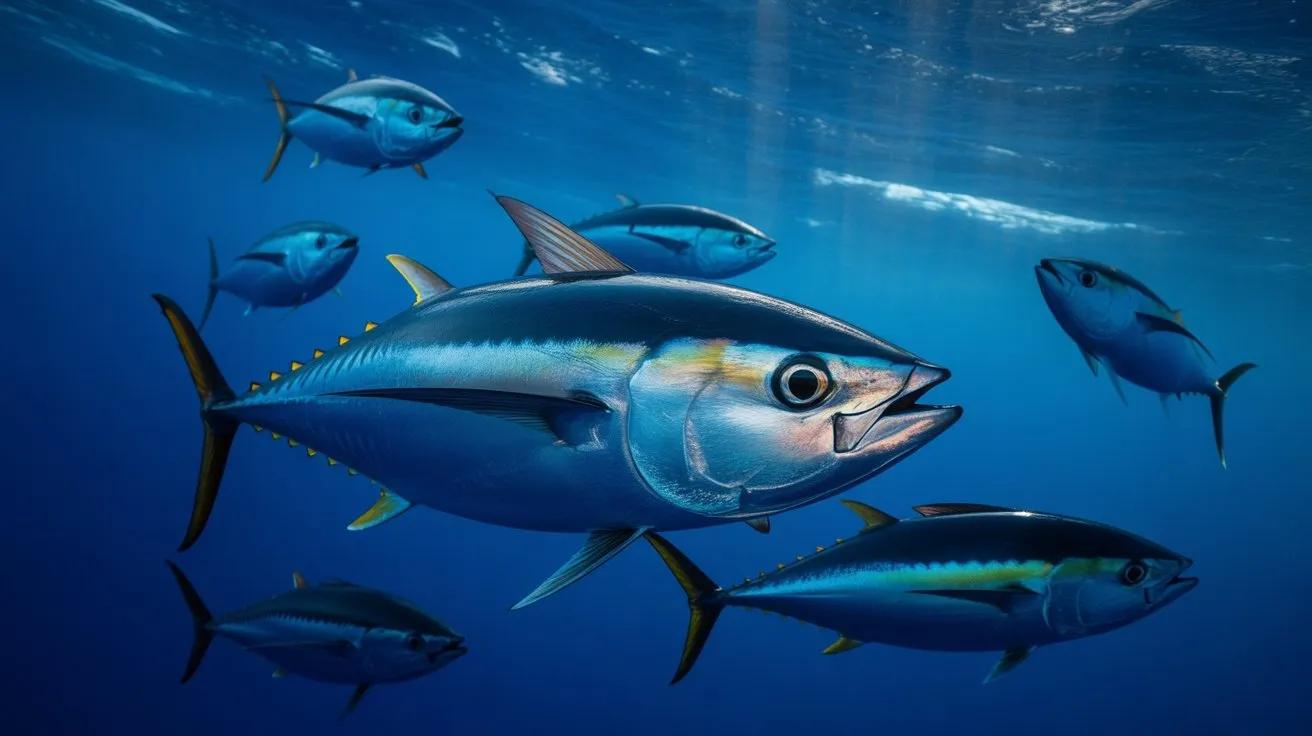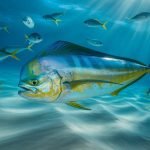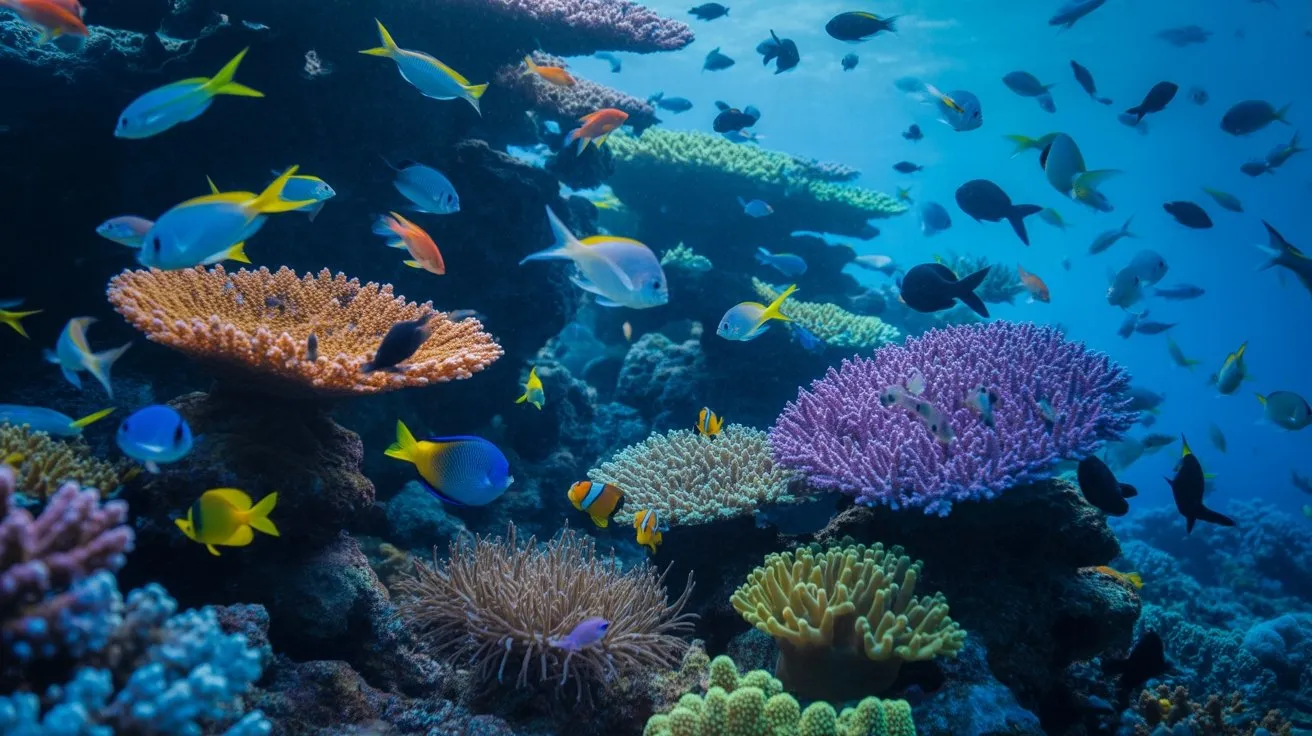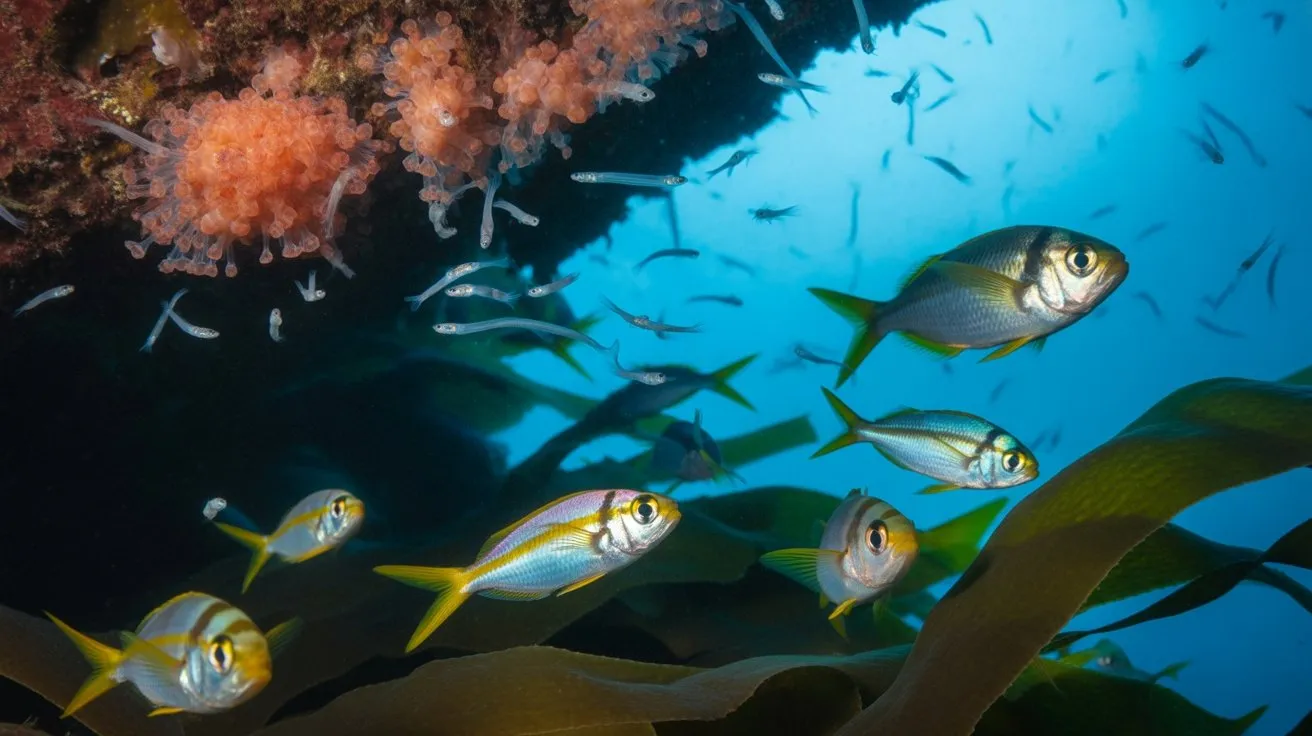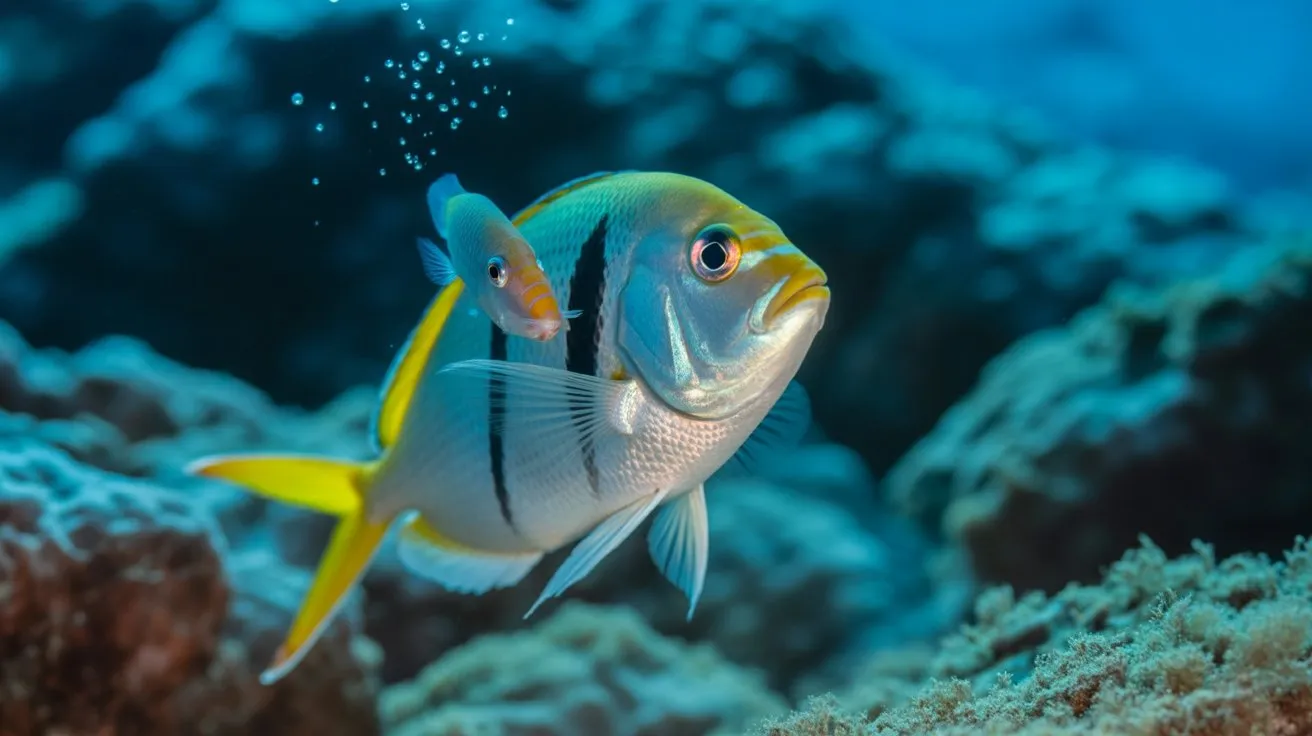What if you could engineer the perfect aquatic predator from scratch? You’d discover that nature already has: the tuna. These torpedo-shaped marvels don’t simply swim—they rocket through oceanic currents with biomechanical precision that puts human engineering to shame. You’re witnessing evolutionary perfection in motion, where every anatomical feature serves a singular purpose. Yet their most astounding capability isn’t their burst speed—it’s something far more extraordinary.
Built for Speed: The Torpedo Body Design
Evolution sculpted tuna into nature’s most efficient aquatic missiles through millions of years of hydrodynamic refinement.
You’ll notice their fusiform body shape minimizes drag coefficient through precise tapering ratios. The anterior profile creates laminar flow attachment, while the posterior maintains streamlined wake dynamics. You’re observing biomechanical perfection: their aspect ratio optimizes thrust-to-drag relationships during high-velocity propulsion.
You’ll find specialized adaptations throughout their anatomy. Retractable fins eliminate turbulence-inducing projections. Their smooth, scale-reduced epidermis reduces surface friction. The caudal peduncle’s narrow cross-section amplifies tail thrust efficiency through vortex shedding control.
These morphological modifications aren’t coincidental—they’re evolutionary responses to pelagic predation demands.
You’re witnessing hydrodynamic engineering that enables sustained speeds exceeding 70 kilometers per hour, making yellowfin and bluefin species apex oceanic sprinters.
Constant Motion: The Physiology of Perpetual Swimming
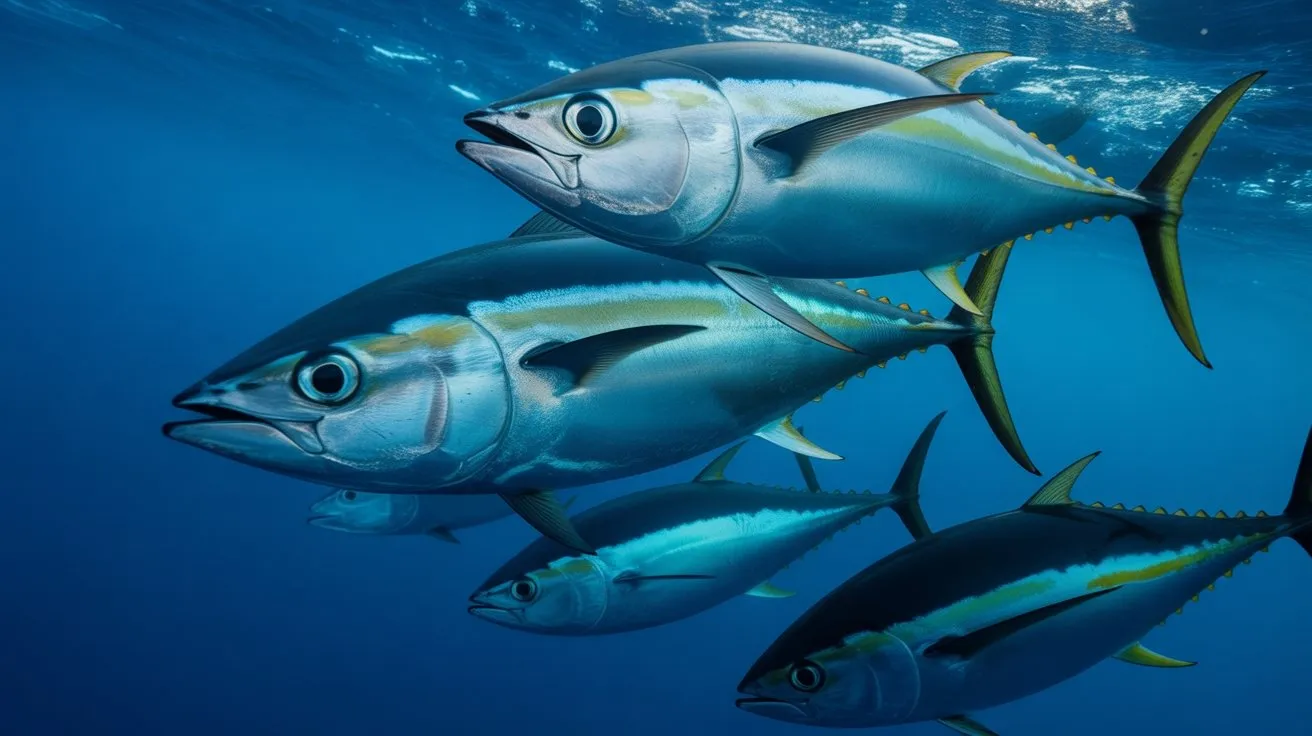
Unlike most fish that can rest motionless on the seafloor, tuna species exhibit obligate ram ventilation—a physiological constraint that demands perpetual forward motion for survival.
You’re witnessing one of nature’s most remarkable adaptations where swimming isn’t optional—it’s essential for respiratory function.
Their specialized gill architecture requires continuous water flow to extract dissolved oxygen efficiently.
When you observe tuna, you’ll notice they’ve evolved unique physiological mechanisms:
- Rigid gill plates that can’t actively pump water like other fish species
- Enlarged heart chambers generating continuous circulation pressure for oxygenated blood
- Modified swim bladders providing neutral buoyancy without energy expenditure during motion
- Counter-current heat exchangers maintaining elevated muscle temperatures for sustained performance
This perpetual motion lifestyle transforms tuna into living torpedoes, perfectly engineered for their pelagic environment.
Record-Breaking Velocities: How Fast Can Tuna Really Go?
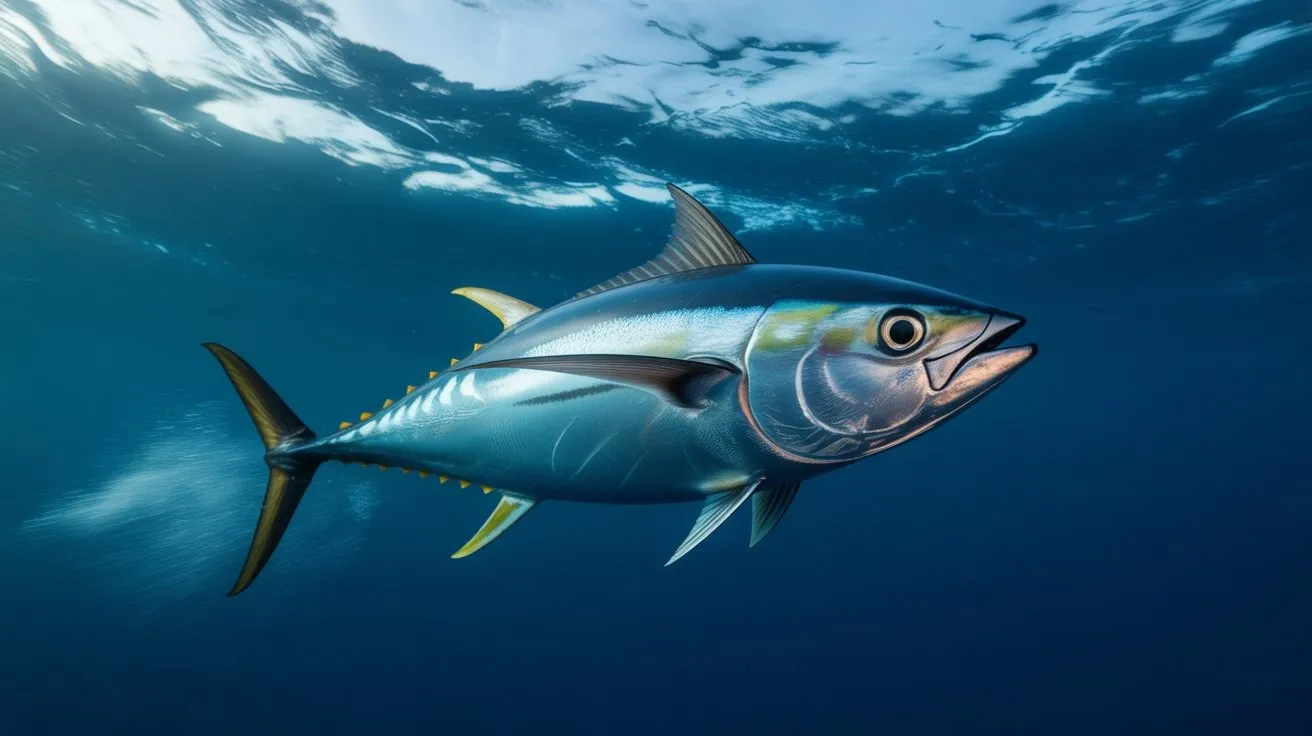
When tuna engage their maximum propulsive systems, they achieve velocities that rank among the fastest recorded for any marine vertebrate. You’ll find bluefin tuna sustaining speeds of 40-50 mph during routine swimming, with burst velocities reaching 75 mph when pursuing prey or evading predators.
Their fusiform body design minimizes drag coefficients, while specialized muscle arrangements generate extraordinary thrust-to-weight ratios.
Research using acoustic telemetry reveals yellowfin tuna maintaining 25 mph for extended periods during trans-oceanic migrations.
You’re observing biomechanical efficiency that surpasses most engineered propulsion systems. The heterocercal tail’s oscillation frequency reaches 10-12 beats per second during maximum acceleration phases.
Temperature regulation through counter-current heat exchange maintains ideal muscle performance, enabling sustained high-velocity locomotion that’s unmatched in marine ecosystems.
Epic Ocean Journeys: Migration Patterns and Endurance

These remarkable velocities serve a greater purpose beyond predation and escape—they enable tuna to undertake some of the most extensive migrations documented in marine biology.
You’ll find these pelagic athletes traversing entire ocean basins, covering distances exceeding 25,000 kilometers annually. Their extraordinary endurance stems from specialized physiological adaptations including counter-current heat exchange systems and highly efficient cardiovascular architecture.
Consider these epic journeys that showcase tuna’s remarkable endurance:
- Pacific bluefin tuna crossing from Japan to California’s coast in 55 days
- Atlantic bluefin swimming from Gulf of Mexico spawning grounds to Norwegian feeding areas
- Southern bluefin circumnavigating the Southern Ocean across three major basins
- Yellowfin tuna maintaining 2-3 km/h sustained speeds during 6,000-kilometer transpacific migrations
These migrations demonstrate how speed and endurance combine to create nature’s ultimate ocean sprinters.
Evolutionary Adaptations: Millions of Years of Streamlined Perfection
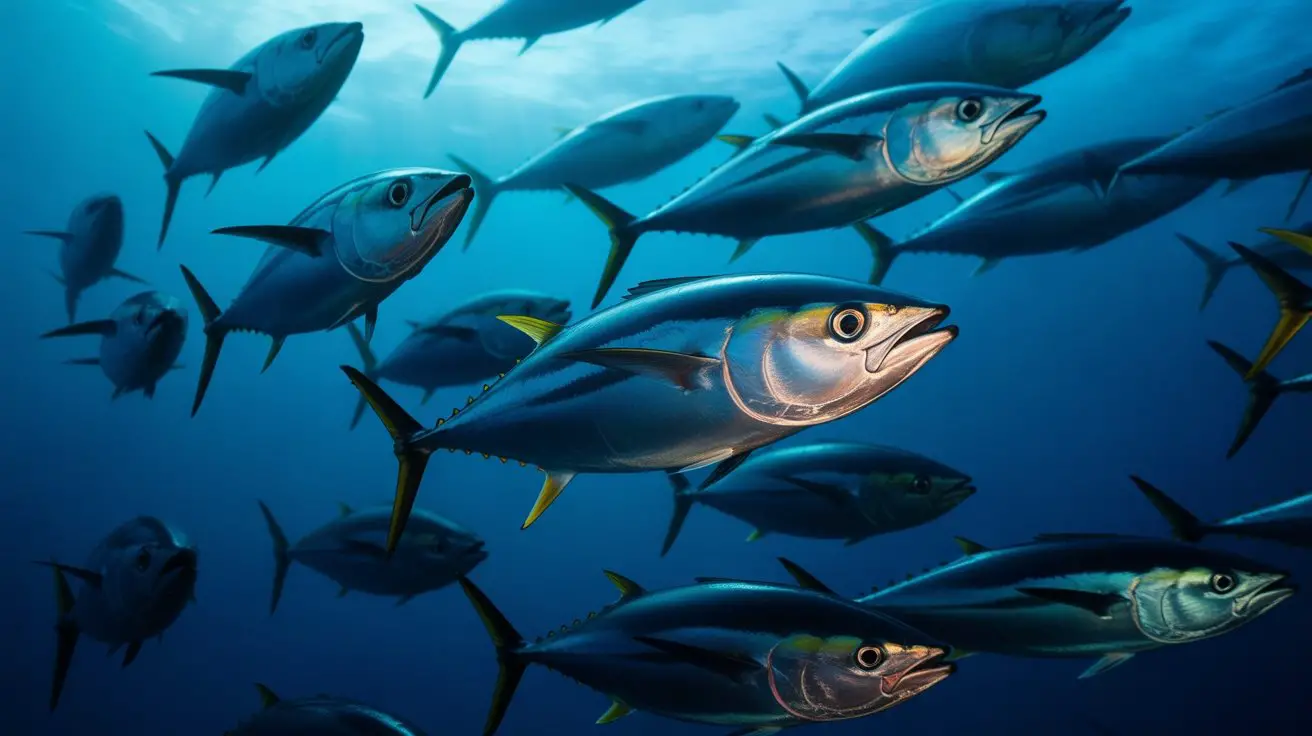
Over 50 million years of evolutionary pressure have sculpted tuna into hydrodynamic marvels that epitomize aquatic efficiency.
You’ll observe their fusiform body shape reduces drag coefficients to remarkable levels, while their heterocercal caudal fin generates maximum thrust with minimal energy expenditure. Their specialized red muscle fibers contain elevated myoglobin concentrations, enabling sustained aerobic performance during high-speed pursuits.
You’ll notice tuna’s counter-current heat exchange system maintains core temperatures 10-15°C above ambient water, optimizing enzymatic reactions and neural transmission.
Their dermal denticles create microscopic vortices that reduce turbulence along body surfaces. Ram ventilation through specialized gill structures guarantees continuous oxygen uptake during locomotion.
These morphological innovations represent convergent evolution’s finest achievement, transforming ancestral fish into precision-engineered oceanic torpedoes capable of sustained speeds exceeding 70 kilometers per hour.
Conclusion
You’ve witnessed nature’s ultimate biomechanical masterpiece—tuna’s torpedo-shaped morphology represents millions of years of evolutionary refinement. As the saying goes, “form follows function,” and you’ll find no better example than these pelagic predators. Your understanding of their heterocercal caudal fins, countercurrent heat exchange systems, and specialized myoglobin concentrations reveals how you’re observing precision engineering. When you consider their transoceanic migrations spanning thousands of kilometers, you’re seeing evolutionary perfection in motion.
